You don’t have to dig through your wallet to know that credit card design hasn’t changed much over the last 5 decades – but that’s all about to change.
Beginning in 2024, all new Mastercards will no longer have the magnetic strip on the back, making swiping your credit card impossible. Instead, new credit cards will have a portrait orientation (vertical), as opposed to the landscape (horizontal) orientation we’ve all been used to. If you look carefully, you can already see that new credit cards get the portrait treatment.
Here’s how BMO’s newest credit card, the
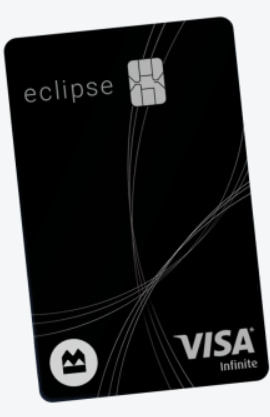
This change in design can be directly attributed to the way making credit card payments has changed. The pandemic accelerated the use of tap and pay technology because it allowed people to pay for their goods without having to touch potentially germ-filled payment terminals.
According to a study commissioned by Mastercard in 2020, 79% of people worldwide now use tap and pay to pay for their purchases and the easiest way to tap is to hold the card vertically. Even if you’re using chip and PIN technology, you are still sticking your card into the payment terminal vertically.
But vertical credit cards aren’t the only design change impacting the way we pay for goods and services – there are many more changes to credit card design that are either already here or on the horizon.
Never miss an amazing deal again + get our bonus 250+ page eBook for FREE. Join 50,000 other Canadians who receive our weekly newsletter – learn more.
What is the history of credit card design?
When it comes to credit card design, it’s important to know the history to better appreciate how far we will have come in the future.
Though credit card design hasn’t changed much in the modern era until arguably the last few years, almost every design change throughout history came as a result of a demand for increased convenience in the way we make payments and in the early days, the design itself changed the way credit worked at all.
It started with writing debts on clay tablets 5000 years ago using an ancient writing technique known as cuneiform. Then, by the 1800s, credit coins came along during the American Civil War. These were metal coins stamped with an image and an account number to identify the purchaser. Once given to a merchant, they would check it against a paper file and authorize the transaction.
The card shape we are used to only came into being at the turn of the 20th century when Western Union introduced a metal credit card known as, “Metal Money” that customers could use to defer Western Union’s services. From there, you actually started to see rewards. In 1936, American Airlines introduced its air travel card. This was a card with a charge plate that allowed you to pay for flights at a 15% discount. The first charge card appeared a decade later, but you could only use it for stores within a 2 block radius and merchants had to bring their sales slips to the bank to collect the debt.
Finally, in 1950, Diner’s Club launched the first universal credit card. Made of cardboard, it was used to pay for meals at restaurants if you forgot your wallet. Then, in 1958, the design of credit cards finally evolved into the durable plastic material that we’ve grown accustomed to thanks to American Express’s first chargecard.
With each iteration, the credit card got smaller, lighter, and more convenient to use, but sadly, it didn’t change much between the late 1950s and now, when the need for a physical credit card is on the cusp of becoming no longer necessary.
How has modern credit card design changed credit card payments?
These days, thanks to the Internet and our persistent interconnectivity, you don’t even actually need a credit card for most of your transactions. All you really need is the data, especially if you’re shopping online.
So where does that leave credit card design? Sometimes, you’re not actually seeing the design of a credit card, but a representation of one. This change is how you interact with credit entirely and makes payments so easy, you’re liable to lose track of the fact that you even made a purchase.
So let’s go through each significant design innovation over the last few years — whether it’s here already or about to be reality — and talk about how each step forward has changed the simple act of paying for things irrevocably.
Virtual cards
In the 60s, credit cards hit the scene because people wanted the convenience to be able to buy now and pay later. That desire has not gone away, but because we are so interconnected by the Internet, the drive to convenience has turned towards having the card at all.
So many of us are already carrying our phones everywhere we go, so why should we have to carry our wallet as well? Virtual cards give Canadians the same rewards and benefits that come with a credit card, without having to remember one more thing to carry throughout our busy lives.
Virtual cards live on our phones or smart watches in mobile wallets and to use them we are simply calling upon digital representations of their physical counterparts. It’s a practice that has become increasingly en vogue since the pandemic when we were encouraged to stay away from each other and limit our interactions. Plus, more businesses than ever are shifting to operate online than ever before. Some are doing it in addition to their brick and mortar shops, while others have made a full transition to becoming a virtual shop in cyberspace.
To meet that trend, virtual cards mean you don’t have to be physically in the same place to make your purchase. And if you are in the physical space, you simply tap your phone and make payments via Google Pay, Apple Pay, or Samsung pay.
Retailers love them because they provide faster payments and better cash flow management. Although one roadblock remains – the access to payment platforms like Google, Apple, and Samsung Pay at the point-of-sale. Adoption of these platforms isn’t as widespread as it needs to be if virtual cards are to become the norm.
But will virtual cards eventually take over? Sure, as the virtual cards that already exist in Canada like the Brim Mastercards and the Stack and Koho prepaid cards improve the amount and quality of rewards they’re offering to compete with the physical cards out there, and as more variety is offered in the virtual credit card landscape, they will become more dominant. After all, virtual cards are already more secure than their physical counterparts in the sense that it’s harder for them to be lost and stolen. Even if your phone is taken, your credit card information is encrypted and stored in the cloud, not your phone.
Plus, virtual credit cards in another sense can be used to stand-in for your actual credit card number when shopping online, so it’s possible to get a virtual credit card in the sense of a dummy credit card number for security purposes.
But at this point, there is more variety in the physical card space, which means digital and physical will have to coexist.
Here’s what you can expect from the
If you want to learn more about virtual credit cards, we invite you to travel down the rabbit hole of this great innovation in credit card design.
Horizontal cards
We touched on horizontal cards a little bit off the top, but let’s look at them more in-depth.
Their design places the chip read by the payment terminal much more in the upper-centre quadrant of the card, which places more of the emphasis on convenience for the dominant ways we pay these days – chip and pin and tap and pay.
“A portrait orientation [is] easier to tap,” Mastercard North America’s senior vice-president of digital products Sukhmani Dev told CBC News in an interview. “From a user’s standpoint, it’s a good design for many reasons.”
The magstrip and the landscape orientation that came with it were designed with the swipe in mind, when consumers had to swipe their cards along a card reader. It’s long been established that now fake readers can be easily forged with illicit skimmers, which can steal your credit card information in seconds.
While all modern credit card designs are somewhat informed by increased security needs, none more so than horizontal cards, as the elimination of the magstrip gets rid of one more avenue for fraud. Fraudsters would sometimes be caught creating or intentionally intentionally damaging card terminals, in the hopes that users would fall back to magnetic strip technology, giving them an opportunity to steal information. With contactless payment, they can no longer rely on that fallback plan.
Meanwhile, demand for contactless payment options has soared since the pandemic in their own right. This accelerated the need for change, as 37% of Canadian consumers avoided places that didn’t offer contactless payments and 9% of businesses made efforts to upgrade their point-of-sale terminals to offer contactless payments.
The value of contactless payments also rose significantly by 60% for debit transactions and the average spend was significantly higher for credit transactions ($48 for credit cards vs. $22 for debit cards), even if the volume declined 11% compared to debit cards.
Expect to see horizontal credit cards take over your entire wallet in the very future, as all cards will likely join Neo Financial’s HBC store card and BMO’s entire slate of new cards with that credit card design in the very near future.
Mobile wallets
In the case of mobile wallets, your credit card once again becomes an ethereal concept rather than a physical thing – as the design is purely digital.
Mobile wallets function as both a payment method and a virtual credit card storage device. Though technically you’re not paying with your phone, you’re paying with the virtual credit card on your phone. You still have to tap your phone to the payment terminal in order to take advantage of the new technology.
In addition to giving you the luxury of leaving your wallet at home, mobile wallets speed up the transaction process in general, making paying for things even more convenient.
The only drawback is that even though adoption of mobile wallet technology is increasing at the point-of-sale, it still isn’t widespread enough to allow you the confidence to leave your wallet at home, knowing that you’ll be able to pay with your phone wherever you go.
This is unfortunate because any business that isn’t set up to accept mobile wallets forgoes the technology to their detriment. This is because 40% of Canadians reported that they are using mobile wallets more often than they did before the pandemic, citing speed, convenience, and safety as the driving factors.
At the forefront are the Gen Z and millennial generations who tend to use mobile wallets with more regularity than older age groups.
The increase in the use of mobile wallets among Canadians is reflected in Apple Pay and Google Pay’s increased penetration into the Canadian market. However, it may take more features, such as recurring bill payments and more rewards or loyalty benefits on their end, to hold people’s attention over the long-term.
Crypto credit cards
Along with a demand for more contactless payment options, came an increase in media visibility among leading cryptic exchanges, such as Crypto.com, Binance, and Coinbase. Along with that, all 3 heavyweights have launched their own cryptocurrency credit cards, which have further changed the way some people are paying for things.
Though marketed as credit cards, they are in fact prepaid Visa or MasterCard supported debit cards that allow you to load a certain amount of cryptocurrency onto from your digital wallet, but when the transaction occurs, the merchant gets the fiat currency equivalent for your purchase.
From a design standpoint, they look and feel exactly like a classic credit card, but that’s only if you opt for the physical version and don’t just stick with the digital edition.
They generally carry with them pretty high fees for loading cryptocurrency onto the card and for exchanging that crypto into fiat currency at the point-of-sale. The source of the funds is your cryptocurrency wallet, which is also debited the corresponding fees.
Not only will you have to pay those fees to the exchange/card provider, you also will likely be on the hook for capital gains tax on every transaction. The good news is, you are only taxed on half of the amount when it’s a capital gain, as opposed to 100% of the amount if you make cryptocurrency as business income.
Of course, the real leap in the way cryptocurrency credit cards will truly change credit card design is if they become actual credit cards. If you could one day borrow against cryptocurrency as opposed to fiat currency.
Is this likely on the horizon?
Yes. In 2021, Salt Lending, a crypto-backed lending firm based in Denver, Colorado announced the development of the Salt credit card, a credit card that allows you to borrow against your actual cryptocurrency holdings and spend cash in the real world in a similar way to how a traditional credit card works.
Applicants will be able to borrow against up to 60% of their crypto holdings. Meanwhile, approval does not require a credit check because the credit card is secured with your cryptocurrency as collateral. Salt is also promising that their credit cardholders will be able to earn cryptocurrency rewards.
The only drawback to this is there will be a very long wait, as Salt has yet to find an issuing bank partner which is a crucial step in being able to launch the proposed credit card. Still, if you’re in it for the long haul, you can join the waitlist right now.
Buy now, pay later credit cards
Third-party buy now, pay later services took the world by storm in 2020 at the height of the pandemic, and the interest in them has continued to rise in the years since. These are services with names like Klarna, Affirm, and Afterpay that you often find just before you check out of some online retailers.
The deal is they send you the item now (at no cost) and you pay them back on a monthly basis until the full cost of the item is repaid.
The most common lending structure for buy now, pay later is interest-free for 4 equal monthly installments that total the cost of your item. The more payments you want to break it up into, the higher interest you pay. However, you often get the first 4 installments interest-free.
Now, continuing to ride on their wave of popularity, one of the leading buy now, pay later companies, known as Klarna, is launching a credit card that takes the basic 4 installment payment structure of any buy now, pay later loan and applies it to each item you charge on the card.
So far, the card is only available in the following locations:
- Sweden,
- Germany,
- The UK, and
- The US
That being said, Visa installments is a similar service Visa issuing banks can offer cardholders that will do the same thing (split any item into four separate and equal instalment payments) either pre-purchase, at checkout, or post-purchase, where an item can be converted into the 4 payment structure. Plus, various other credit card issuers in Canada currently offer buy now, pay later payment options right now.
Branded credit cards
The last feature of credit card design currently available is branded credit cards. These are the cards (most commonly issued by MBNA in Canada) that feature company, alumni, or sports team logos right on their face.
To some, they might be the most gaudy example of credit card design currently available, but they do directly translate to savings and benefits for the cardholder.
For example, MBNA offers branded credit cards for The Canadian Legion, Melaleuca, Harley-Davidson, and Amazon.ca. They are all guaranteed to stand out visually in your wallet and they offer some rewards for frequent patrons of those organizations.
Rewards among these branded credit cards include the following:
- Cash back on Amazon.ca purchases,
- 100 loyalty shopping dollars towards Melaleuca wellness products,
- the chance to win a Harley-Davidson motorcycle, and
- the chance to support the care of veterans and their families every time you make a purchase while also getting cash back.
Granted, this example of credit card design isn’t going to change the way you pay in the future, but pull any one of these fully decorated cards out of your wallet to pay for dinner and you’re bound to turn some heads.
How will credit card design affect the future of credit card payment?
Having gone over the credit card design innovations of the present, it’s time to examine what’s coming in the future more closely and how these credit card designs will change credit card payments in the future and beyond.
No magstrip
The magnetic strip is one of the most successful business technologies ever invented and has stood the test of time from its invention in the 1960s until now.
The technology is simple enough. Data is stored in magnetic strips affixed to the back of plastic cards. When a card with a magnetic strip is swiped, the data is read by a magnetic head that transfers crucial payment data, such as the account number, name, expiration date, and PIN code into the payment terminal.
Unfortunately, payment terminals with swipe technology are easy for thieves to replicate using skimmers – dummy card readers that will transfer that important data into a thief’s waiting hands. Ultimately, its static way of storing data proved to be its downfall, as it is vulnerable to at least a portion of the credit card fraud that costs Canadians $800 million in 2021.
On the other hand, chip and pin technology stores dynamic, cryptographic data in the microcircuit chip on the card, which makes credit cards with this technology harder to counterfeit. Plus, very few payment terminals actually have swipe capability anymore. Instead, we’re sticking our credit cards in the centre of the point-of-sale device and it is reading that chip for information.
So as the magstrip disappears, payments will not just get safer, but faster as well with a much thinner margin for error when it comes to misreading the data and having to start the payment again.
Portrait orientation
Not only do portrait orientation credit cards strike fear in the heart of our webmaster who will have to flip every card displayed on this website so that they are straight-up-and-down, but they’ll also make the act of paying for goods with them faster and more convenient than it has ever been.
Credit cards with a portrait orientation are a direct response to the prevalence of tap and pay technology and the fact that every time you tap your card, you’re likely holding your credit card vertically.
Even if you have to switch to your pin, you’ll stick the card into the payment terminal slot vertically, so to have your card already oriented in that direction saves time.
This isn’t so much a case of design influencing the way we pay, but the way we pay influencing credit card design to make things even more convenient and faster for all involved, including the merchant.
Our verdict
There are several pros and cons to these fundamental changes to credit card design, But overall this is a giant step forward for all involved. Merchants don’t have to wait for transactions to go through before they are paid and regular people can be in and out of the store in record time as it only will take seconds to tap.
| Change 1 | Pros | Cons |
|---|---|---|
| No Magstrip | * More secure payment data protection * Harder to replicate |
* Cannot be swiped if the old-school payment terminal is the only option at certain merchants |
| Portrait orientation | * Already primed for tapping * Saves time * More seamless when sticking your credit card into a payment terminal and entering your PIN |
* Doesn’t fit easily in the majority of wallets in the vertical direction |
| Traditional Card | * Fits easily in most wallets horizontally * More cards to choose from with a wider variety of rewards and benefits. |
* Isn’t as secure as a card without a magstrip * The transaction isn’t as fast at the payment terminal because you have to rotate your credit card around vertically before you can tap |
Like anything, such a fundamental change to credit card design and credit card payments will take some getting used to.
Having a credit card that is portrait orientation will certainly be annoying at first, but once we’ve dealt with it for long enough, we might all find that it makes our retail interactions of all types much quicker and that’s great when it comes to our busy lives.
Meanwhile, no magstrip means your credit card will be safer and not as vulnerable to theft as it once was, so overall, these changes must be evaluated as nothing less than positive.
What credit cards have the most unique designs?
Some of the most innovative standouts in credit card design currently available are the
Check out a summary of the cards in the table below:
| Credit Card | Welcome Bonus | Earn Rates | Annual Fee, Income Requirements | Apply Now |
|---|---|---|---|---|
| None | * 0.5% cash back on all purchases |
* $0 * $15,000 personal |
Apply Now | |
| 70,000 points Terms | * 5 BMO Rewards points for every $1 spent on dining, groceries, gas, and transit * 1 point per $1 spent on all other purchases |
* $120 * $60,000 personal/$100,000 household |
Apply Now |
To learn more about all the credit cards above, visit our compare cards page.
Brim Financial Mastercard
The
That may not look impressive, but you can earn a higher return when you shop at over 250 brand partners. What you earn depends on where you shop, but it can be as much as 7%.
Brim also has an eye to the future in the sense that it’s one of the few cards compatible with all the available mobile wallet payment services.
More of an unexpected surprise is the fact that it also includes 4 types of insurance, including the following:
Brim Mastercard Please review your insurance certificate for details, exclusions and limitations of your coverage.Extended Warranty 1 year Purchase Protection 90 days Mobile Device $500 Travel Accident $300,000
If you’ve noticed the mobile device insurance, that’s another added benefit, as it’s pretty rare to have that on most credit cards.
BMO Eclipse Visa Infinite
GC: $150

The
- 5 BMO Rewards points for every $1 spent on dining, groceries, gas, and transit
- 1 point per $1 spent on all other purchases
BMO Rewards is one of the most versatile rewards programs on a credit card in Canada, As you can redeem for the following:
- travel,
- statement credit,
- merchandise,
- Investments,
- gift cards, and
- Experiences
If you spend an average of $2,000 per month, your best value among all of the above categories would be from travel at $386 in value. Of course, we’ve already broken down how to maximize the BMO Rewards Program for the true credit card mavens out there.
It should be noted the welcome bonus on this card isn’t bad either. You’ll get 70,000 points after spending $3,000 in the first 3 months and $2,000 every month in the first year – a value of $469, which is pretty substantial.
Plus, since this is a Visa Infinite card, you get several additional bonuses that make the $120 worth it. Oh, and did we mention that same annual fee is waived in the first year?
The additional benefits you’ll receive for Visa Infinite status include:
- an annual $50 lifestyle credit,
- mobile device insurance,
- 10% more rewards for an additional authorized user,
- free credit score monitoring, and
- enhanced security features
That is quite a bit, but remember the income requirements with this card are quite high at:
- $60,000 personal or
- $100,000 household
And though the annual fee is pretty standard, it is quite expensive and that’s even if you take into account the fact that it’s waived in the first year, so make sure you can afford to get this card if it’s something that looks good to you.
Plus, until April 30, 2022, you can get an additional $100 in cash through the GeniusCash program on approval. It’s great to offset the second year’s annual fee, or you can just consider it as free money!
How credit card design reduces fraud
We’ve touched on this a little bit in the above, but it can’t be understated how important a role security plays in motivating new credit card design. The new improvements we are about to see, and have seen over the years, chiefly exist to make paying for things safer and to cut down on credit card fraud.
Let’s go over a few of the improvements:
Credit card imprinter to electronic payment terminals
Credit card imprinters were the way merchants recorded your payment information from the advent of the credit card in the 1960s right into the 1990s. Now, they are a mostly-dead technology similar to DVDs, cassettes, and CDs.
However some merchants still have them in case of an emergency, like a power outage. You also still might find them some taxicabs. They work when you place your credit card in the centre of the device and place a carbon paper over top of the credit card. Once that’s done, the merchant will slide the weight over top, pressing down on your card and creating an impression of your card details on the paper.
Obviously, with paper copies of credit card details just lying around, it’s easy to see how someone might steal them and why the credit card industry switched to payment terminals beginning in the 1980s. Payment terminals are much harder to steal and much more difficult to manipulate by comparison, even though they were still vulnerable to skimming.
While we’re at it, we should say that skimming further changed credit card design because it brough about the EMV chip. This is where you get that little copper square on your credit card to this day.
Signatures to chip and pins
It’s obvious why no one signs their credit card receipts anymore – giving a copy to the merchants as a promissory note – signatures can be forged.
PIN numbers are much more individualized and harder to copy. Still you have to be careful not to share your PIN with anyone and cover the terminal when you’re typing it in. Also, there is the slight inconvenience of possibly forgetting your PIN, but thankfully, they are easy to change.
Though not perfect, chip and PIN technology fundamentally changed the way we interacted with our credit cards and paid for things.
It is still influencing the design of credit cards going forward because vertical cards are meant to make it more natural and faster to stick your credit card into the payment terminal by being already oriented in the direction they need to go.
Your turn
What do you think? Are you glad Mastercard is finally doing away with the magstrip? Are you excited about the changes to credit card design going forward and do you think it will make it easier or safer to pay?
Let us know in the comments below!
FAQ
What is changing about credit card design?
Mastercard announced that by 2024, all of their credit cards will lose the magnetic strip and more and more cards will have a portrait orientation, meaning they will be oriented vertically to accommodate how people hold their credit cards when tapping them at the payment terminal. See “The Future Of Credit Card Design” section above for more details.
How will credit card design affect credit card payment?
The reason credit cards are being designed to go vertical is because of the way people are paying for their items at the point-of sale. Since the pandemic, more and more Canadians are using contactless payment options, so the shift in design of a credit card towards a portrait orientation is meant to accommodate tap and pay technology. Also, without the magstrip, people will no longer be able to swipe their credit card.
How were credit cards designed in the past?
From the 1960s to now credit cards were only horizontal pieces of plastic with magstrips on the back. Visit our “History of Credit Card Design” section to find out more about how credit card design has evolved over the years.
Why have credit card designs changed over the years?
Mostly it’s due to people demanding more convenience and easier ways to pay for their goods. With every new iteration of credit cards over the years, they’ve become smaller, lighter, and easier to present at a payment terminal until finally, you don’t necessarily need a credit card in-hand to use it to pay anymore, thanks to the advent of virtual credit cards and mobile wallets.
What are some of the innovative ways credit cards are designed now?
Well, we mentioned virtual credit cards and mobile wallets in the previous answer, but there are also Buy Now, Pay Later credit cards, cryptocurrency credit cards, and branded credit cards. See our “Modern Credit Card Design” section for more information.
creditcardGenius is the only tool that compares 126+ features of 231 Canadian credit cards using math-based ratings and rankings that respond to your needs, instantly. Take our quiz and see which of Canada's 231 cards is for you.



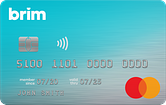

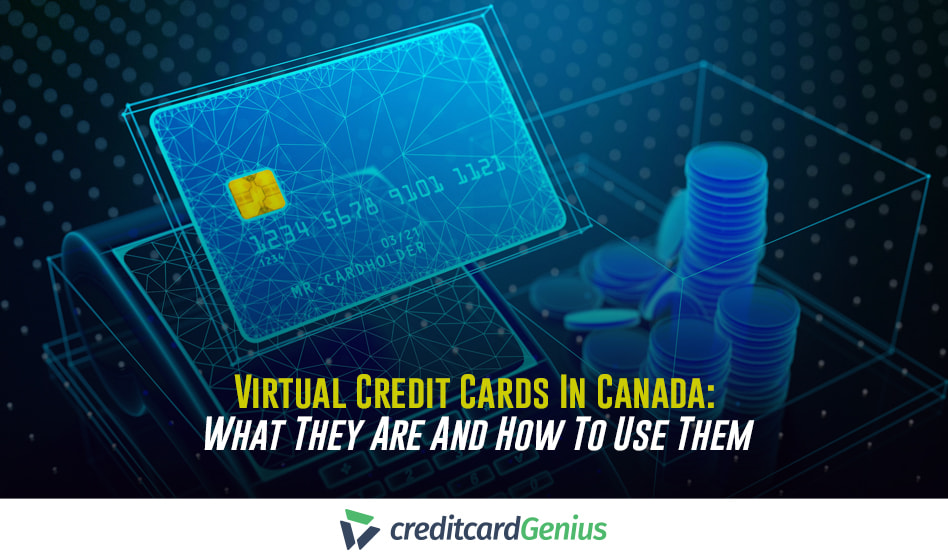
 $150 GeniusCash + Exclusive: Up to $637 in value + 5x points on gas & groceries.*
$150 GeniusCash + Exclusive: Up to $637 in value + 5x points on gas & groceries.*
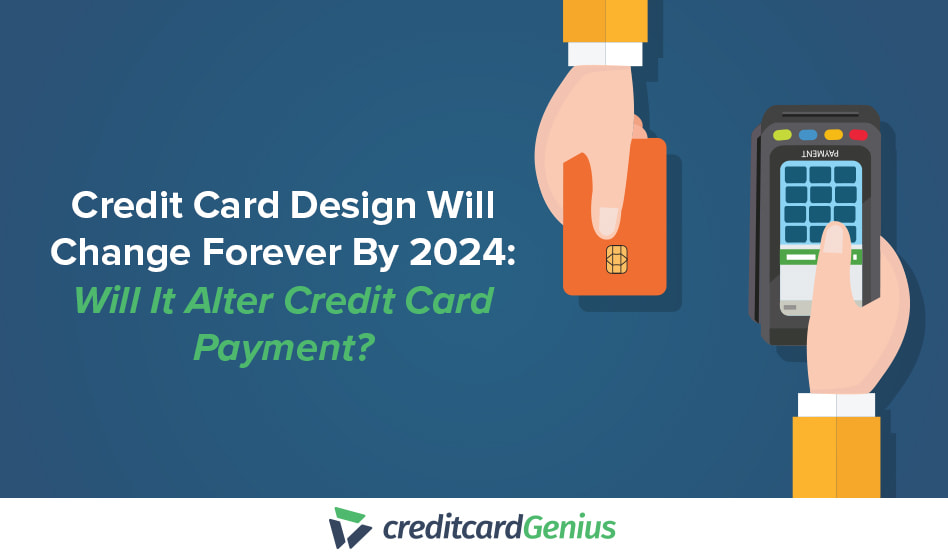




 GC:
GC: 

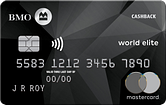


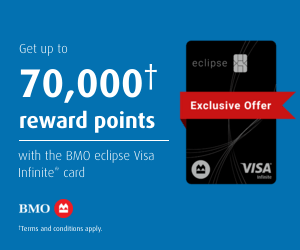
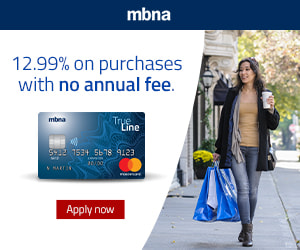
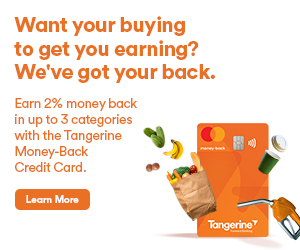




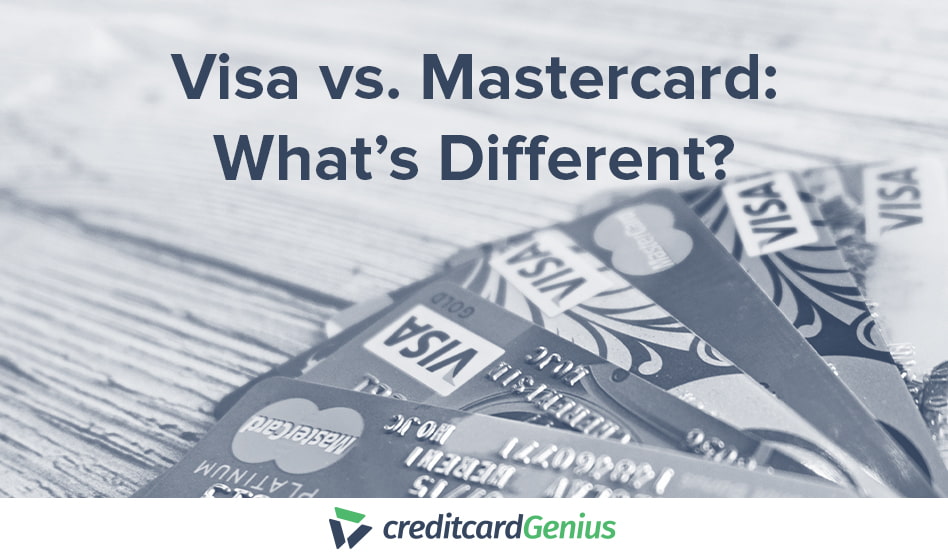

.png)






















Comments
Leave a comment
Required fields are marked with *. Your email address will not be published.
Showing 2 comments